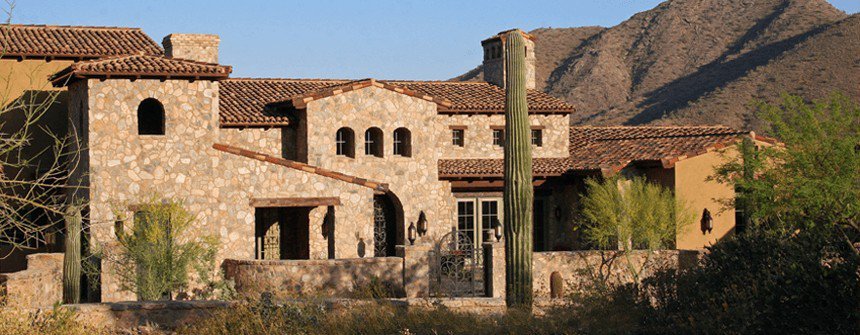![]() Phoenix, Arizona: 602-932-1623
Phoenix, Arizona: 602-932-1623
![]() Phoenix, Arizona: 602-833-1185
Phoenix, Arizona: 602-833-1185

October 16, 2017
Rain gutters are those parts of a roof system which serves to collect and divert rainwater away from the roof edge. They are installed to funnel water off from the roof and away from your home or building, in effect protecting your sidings, windows, doors and foundation from water damage.
A properly installed gutter system can help reduce erosion which can weaken the foundation of your house or building, prevent leaks in basements and crawlspaces and cracks on walls and floors, protect painted or stained surfaces by reducing exposure to water, and provide a means to collect rainwater for later use. Having a good gutter system installed at the start can help you keep the costs of future repairs and renovation to a minimum.
Gutters can be made from a wide array of materials, including cast iron, galvanized steel, painted steel, copper, zinc, aluminum, concrete, wood, PVC or other plastics. They can be built by your roofing contractor to form a trough along the lower edge of the roof slope, fashioned from the same roof covering and flashing materials.
They can alternatively be separately made on-site and suspended beyond the roof edge and below the projected slope of the roof. There are also the so-called “seamless” or joint free gutters which are commercially available in various shapes, sizes, and finishes. There are some roofing contractors who can offer to install gutter systems with built-in screens, louvers or solid hoods that will allow water from the roof to flow through while filtering leaves and other debris that have accumulated on the roof over time.
As with the roof itself, the rain gutters require regular cleaning and maintenance. Otherwise, they will get clogged with leaves and accumulated debris. But how often should they be cleaned? It will depend largely on such factors as the proximity of trees to the roofline, the type of trees in the area, and the slope and type of the roof. Gutters of houses and buildings with nearby trees should be cleaned more frequently, as well as those in low sloped roofs.
With clogged gutters, rainwater can overflow and leak into the building. Clogged gutters can also lead to a build-up in stagnant water which will serve as a breeding place for mosquitoes. Most experts recommend at least twice-a-year cleaning and inspection of gutter systems most especially in commercial establishments.